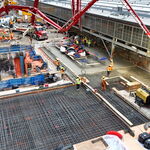44 North
Senior Member
Those two areas don't possess similar commuter patterns however. Chicago is a lot more sprawling than Toronto - and is a larger city, so it inevitably takes up a much larger area. The GGH is a general urban region, but many of the population centres within it act largely independantly. Racine on the other hand is very much in the commuter belt of Chicago. There aren't many people going into Toronto for work from St Catharines, but from Gary, or Kenosha? Plenty.
For example, 614 people who live in Racine County work in Cook County (Chicago). 194,000 people live in Racine.
Cambridge has 340 people working in Toronto, out of 134,000. Racine is about double the commuting rate, and is 20km further away from downtown chicago than Cambridge is from Toronto.
Although this isn't really the thread for this, if those numbers for Cambridge are true, then there is absolutely no business case for a Cambridge GO extension.
Agreed not the right thread for this, but now I'm curious considering I support a Cambridge GO Rail extension. I'm looking at numbers that say 1,130 people commute to TO from Cambridge, not 340. Granted I'm not good at StatsCan's site. Also says another 1,950 work in Sauga. Combined I think that's reasonable for GO rail, at least relative to the commuting patterns for other cities that are getting considerably more than a couple trains per day (what Cambridge would realistically see). Pretty sure 340 is people who live in Toronto but work in Cambridge.




